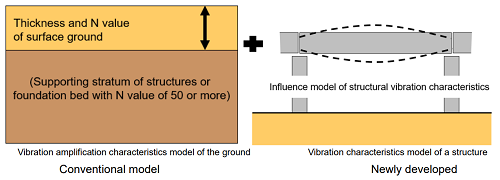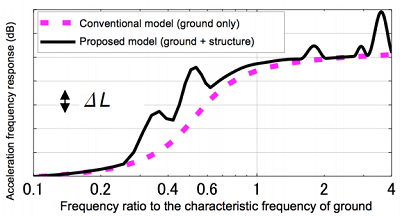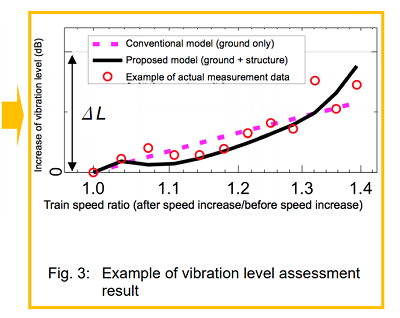24. Method to extract points susceptible to ground vibration increase due to train speed increase
Ground vibration caused by running trains generally increases linearly in proportion to the logarithm of the train speed.
To date, RTRI has proposed a method to assess the inclination of this line in advance based on the thickness of the ground surface layer and average N value of the surface layer (index of hardness) obtained through ground investigation for construction.
However, even though the thickness of the ground surface layer and the N value were almost the same level, the amount of increase could differ from other points due to local variations.
Therefore, a detailed examination was performed based on numerical simulations and past measurements, to clarify that the vibration characteristics of a structure (for example, the natural frequencies of a girder) had an impact on the local variation.
Based on this knowledge, a method has been developed to assess the increase in ground vibration when increasing train speed without performing detailed numerical analysis.
With this method, vibration characteristics including ground vibration amplification characteristics and natural frequencies of a structure (Fig. 1) are combined to make a vibration transmission model for the target point of assessment (Fig. 2), and the ability to assess the increase in ground vibration involving local variations indicated on the actual measurement data has been confirmed (Fig. 3).
The process of this method is, first to roughly evaluate the amount of increase in ground vibration when increasing train speed according to the ground conditions, and then to narrow down the structure characteristics likely to influence the ground vibration under the ground conditions considered to have a large impact.
This method is expected to be applied for prior assessment of a combination of ground conditions and structure characteristics that can increase the variation in ground vibration.



